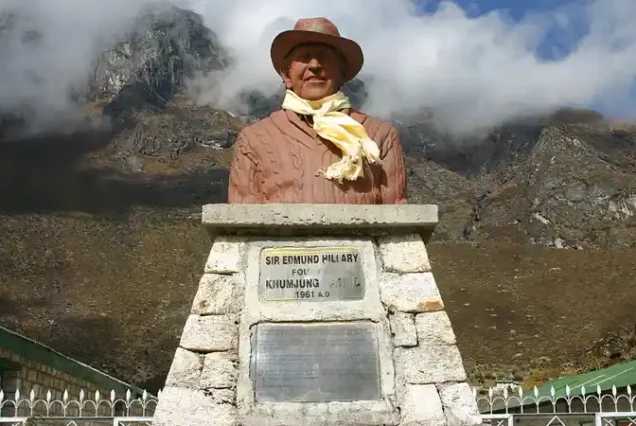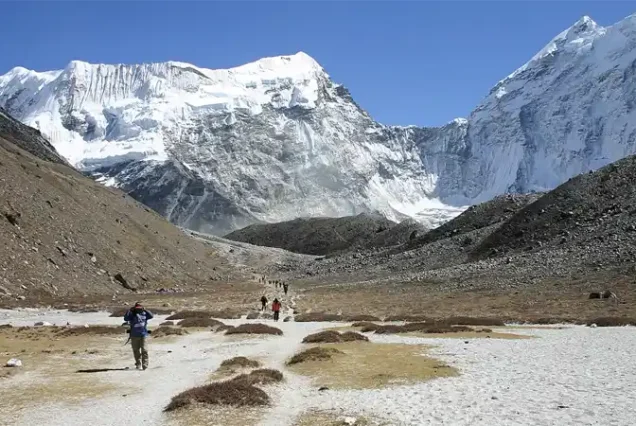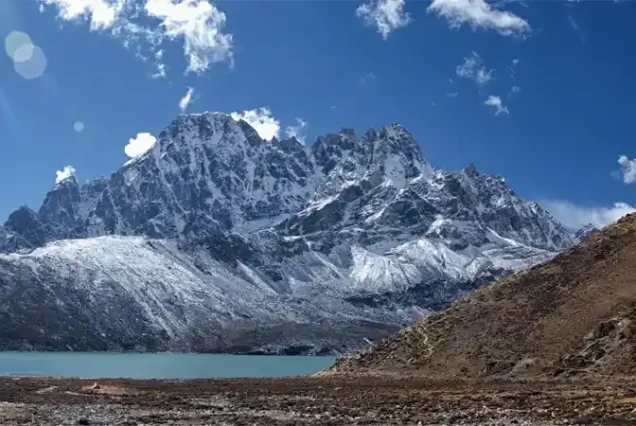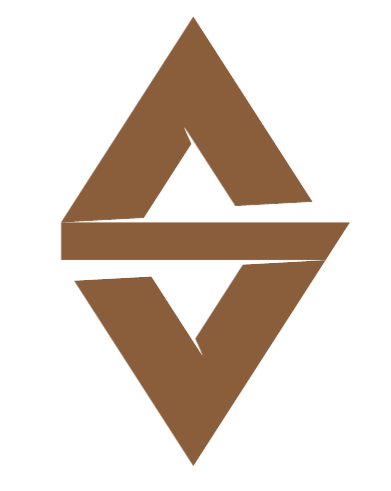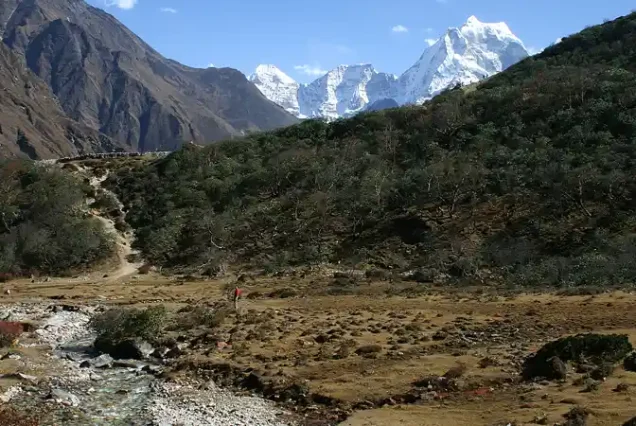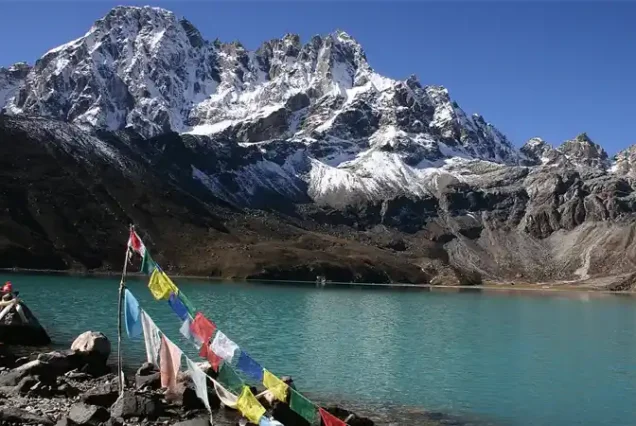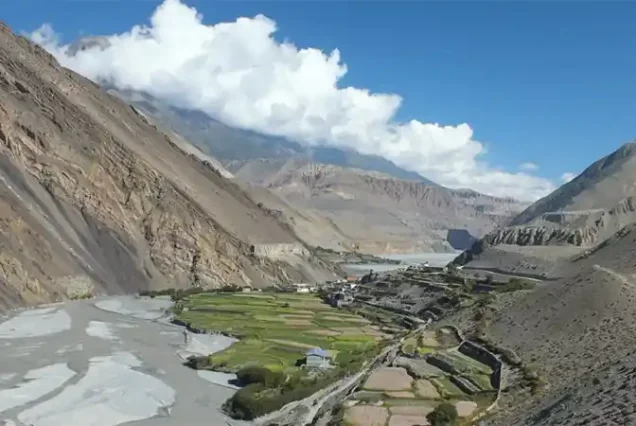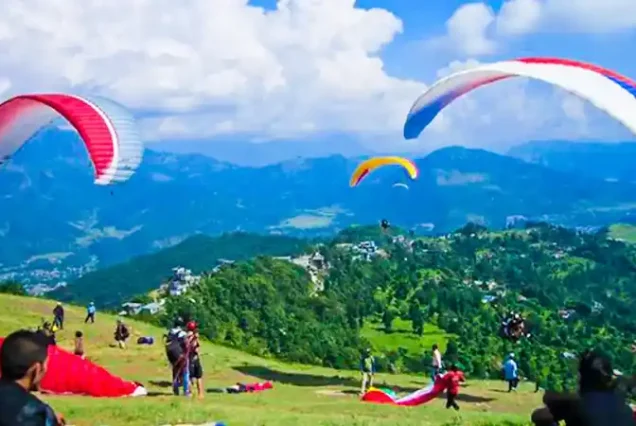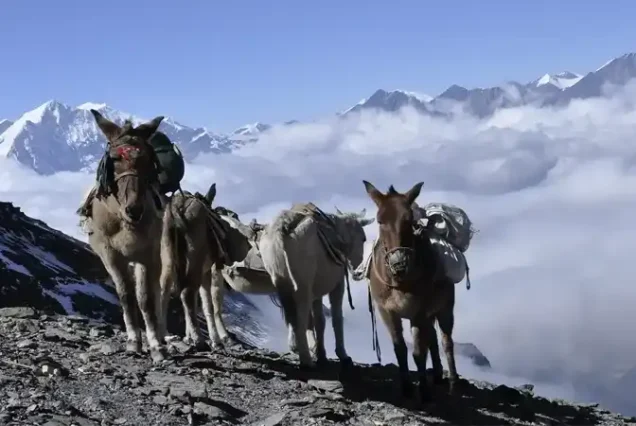Everest Epic Trek
Duration
15 Days
Max People
50
Min Age
10+
Pickup
Kathmandu
Land of Mythical Yeti and The Sherpas
The Everest Trek is an epic, well-known, global trekking route inside the Khumbu region of Nepal. Khumbu is famous for the land of Mount Everest, the land of Yeti and the native area of the Sherpa. Sherpa is a Nepalese ethnic group famed for their rich culture, superior climbing skills, and extreme high-altitude resistance. Sherpas are the lions of Everest. They have lived in the country’s high altitudes for generations and have long served as guides and porters. Their local expertise has been invaluable for tourists visiting the area.
Epic Everest Trek starts with a morning 35-minute flight from Kathmandu to Lukla. From there, the Everest Trek begins and after a few hours of trekking you will enter the highlands of Sagarmatha National Park. The route now ascends through forest to Namche Bazar, the capital and commercial center of Khumbu. After acclimatization day, we continue through Tyangboche monastery, located under the foothills of Ama Dablam (6,921 m). The Everest Trekking route reaches Gorakh Shep and Everest Base Camp. The last point is Kala Patthar (5,615 m) to see the sunrise or Sun set. There, one can enjoy the spectacular view of Mount Everest, surrounded by other giants such as Nupse and Lhotse and other snow-capped mountains. You descend the same trail back to Lukla and Kathmandu.
Everest Trek includes beautiful villages: Phakdin, Manjo, Jorsale, Pangboche, Dingboche, Pheriche, and others. According to Sherpa and Tibetan cultural beliefs, Everest is the Mother of the Earth.
Book your Everest Epic Trek with us! Shangrila Voyages Team
Namaste!
Includes
- Meet, assisted upon arrival at Kathmandu by our office representative.
- All arrival / Departure transfers as per the itinerary by air-conditioned vehicle.
- 3 Nights twin/double room accommodation with breakfast at 3 star hotel in Kathmandu.
- Kathmandu city tour as per the above itinerary with our local English speaking guide including monumental entrance fees.
- Meals (breakfast, lunch and dinner) with Tea and coffee and hot water during the trek including guide and necessary support staffs with their insurance and salaries.
- Lodge to lodge accommodation during the trek.
- Airfare for the sector Kathmandu / Lukla / Kathmandu with domestic airport tax and necessary airport transfers.
- Sagarmatha National Park Free and Trekkers’ Information Management System fee.
- Applicable hotel taxes.
Excludes
- Any meals in Kathmandu other than breakfast.
- Travel insurance.
- International air fare to and from Nepal.
- Nepal Tourist Visa fees.
- Items and expenses of personal nature.
- Any kind of alcoholic drinks, cold drinks, snacks, laundry, phone call, internet.
- Personal Trekking equipments.
- Emergency Evacuation (Helicopter Rescue).
- Any costs which arise due to a change of the itinerary, landslides, domestic flight delays due to weather, political disturbance and strikes etc.
- Any other costs whatsoever, that is not mentioned in the cost inclusion.
- Horse renting and additional porters during the trek.
- Tipping amount for Guide, Porter and Driver.
Recommended trekking equipment and clothing.The clothes you bring should be able to protect you from both the heat of the days and the cold of the nights. During daytime trekking at lower altitudes, lightweight trekking pants and shirts are recommended. It is always a good idea to bring a waterproof jacket and some warmer clothes, as the mountain weather is very unpredictable. For cold nights, thermal clothing, a warm fleece jacket and even a down jacket will help keep you warm.
warm hat/balaclava
Beautiful at night, essential hats for cold trekking days.
Neck gaiter
For winter trekking they really are the best for keeping warm!
Sun hat
A baseball cap is ideal. Bring plenty if you like to change colors every day or not. A wide-brimmed sun hat is also good.
Sunglasses
Suitable for snow, it’s a lot of light up there, but you don’t need special glacier goggles with side pieces. Contact lens wearers report very few problems except cleaning them in the conditions. Ski goggles are unnecessary.
Sunscreen and lip balm with sunscreen
The sun is strong at altitude, especially after the snow. Bring sunscreen with at least SPF 30 PA+ and lip balm with SPF 15 or higher
Moisturizing
A small tube for sensitive or well-cared skin. The air is dry and the sun is strong.
Fleece jacket/vest
Most hikers consider this essential, but alternatives are a thick thermal shirt or light jacket. In Kathmandu you can get almost any type of fleece you need.
Down jacket
Almost essential for cold afternoons. A down jacket is the best option.
Thermal shirts/underwear
Good thermals, both at the top and at the bottom, are one of the secrets for the comfort of trekking in cold climates. Expedition weight thermals are the most versatile and can be worn as a high altitude trekking top or under pants on extremely cold days. Zip-up tops are great for changeable weather.
Sleeping bag
Silk weight is the lightest and warmest, mid weight is perfect. Ideal for nights in the sleeping bag!
Shirt of the day
T-shirts are popular, but a cotton shirt or blended-thread travel shirt is more versatile. The collar protects the neck and the sleeves can be rolled up or down. Take two or three so you can swap wet for dry.
Fleece/sweatpants
Great for chilly evenings, thicker is better and readily available in Kathmandu.
Trekking pants
You will live in these. Light, loose, dark-colored material is best. You can get by with just one pair, although two are better.
Wind pants
If your trekking pants are reasonably windproof, then special windproof pants are not needed. If you bring a pair, it is not necessary to have Gore-tex. Similarly, non-waterproof is quite fine.
Boots
For a happy walk you need comfortable feet. Good boots have: good ankle support, plenty of toe room for long descents, a stiff sole to decrease twisting, and are lightweight because you lift the boot with each step. Look at the inner lining: leather is good, and Cambrelle is even better, a material that eats up stinky bacteria on your feet. Good light trekking boots or all light leather boots are perfect. Boots should be worn lightly before the hike and this should include some steep hills to show any trouble spots before the hike. The longer the hike, the better boots you will need. If you are not a climber, consider carefully if you need them or not, since you will only use them for trekking. Do not bring sandals or leather boots for trekking.
Socks
On the field, your feet will be warm or even hot while you walk, so high-quality cotton-blend athletic socks are best. Three or four pairs are enough. Thick trekking socks are best for higher altitudes and cool nights. Most modern hiking boots fit large feet perfectly, but wearing many pairs of socks at the same time is impractical.
Duffel bag
All trekking equipment carried by porters or horses must be packed in a sturdy backpack. The best thing is a simple design, without wheels and without folding handles.
Backpack
This should be comfortable and most importantly a good waist band that transfers some of the weight to the hips. It should be big enough to meet your basic needs, such as a jacket, fleece blanket, water, camera, etc.
Trekking sticks
Definitely useful, especially in steep and rugged terrain, but if you’re not used to using them, you can get by without them.
Gloves
A good pair of warm, windproof gloves is essential. Available in Kathmandu at a low price if you don’t have a pair.
Water bottle
It must be leak-proof, hold a liter or more, and be able to drink boiling water. The best are Camelback, Nalgene or a similar brand, or European fuel bottles. You need at least 1 bottle of water in addition to a hydration system. Bottled water is also available in Kathmandu.
First aid box
Please note that our guide will also carry a basic first aid kit during the trek. However, we still recommend that you bring your personal first aid kit along with any personal medications you may be using.
Snacks and nutrition
You will want healthy snacks and vitamin tablets. Chocolate bars, dried fruit bars and dried fruits are readily available at the major department stores in Kathmandu. Whole foods are nutritious and provide energy.
This list is only a guide. Use your experience and the features listed to find the best equipment for you.
Please note:
Tight, figure-hugging clothing, such as those made with Lycra, can often be offensive to locals, especially women. If you find these items comfortable as a base layer, pack something to wear on top of them.
Trip Notes:
For Bookings or Queries related to the Everest Trek, please email us at [email protected] or Fill out the forms or whatsapp us on +977 9851093187 and we will get back to you ASAP.
Tour Plan
Tour Map
We operate tour, trekking and rafting in all over Nepal, Tibet, Bhutan and North East India, to the canyons, to the mountains, to the rivers and beyond.
Quick Links
About Company
- © 2025 Shangri La Voyages All Rights Reserved.







